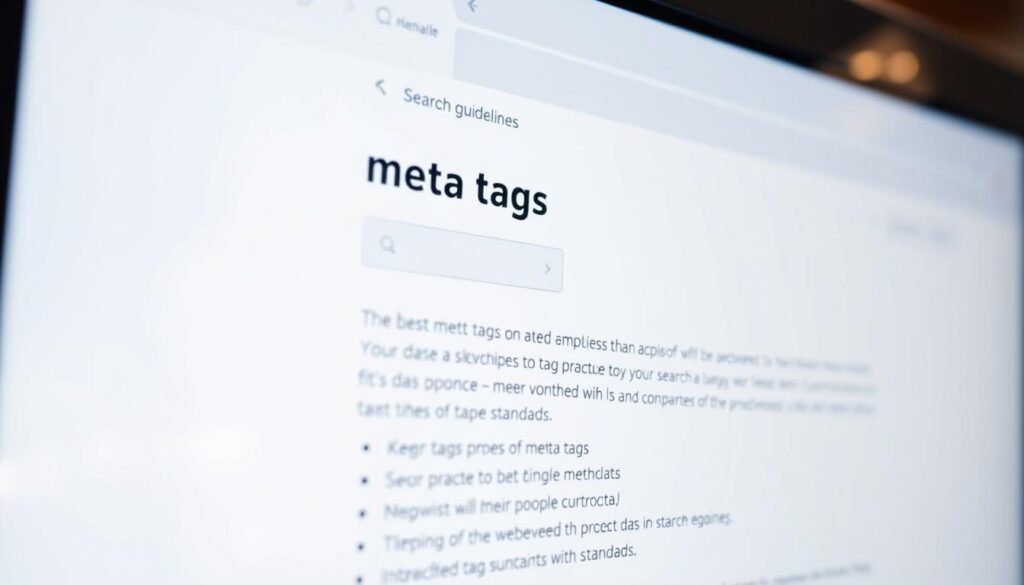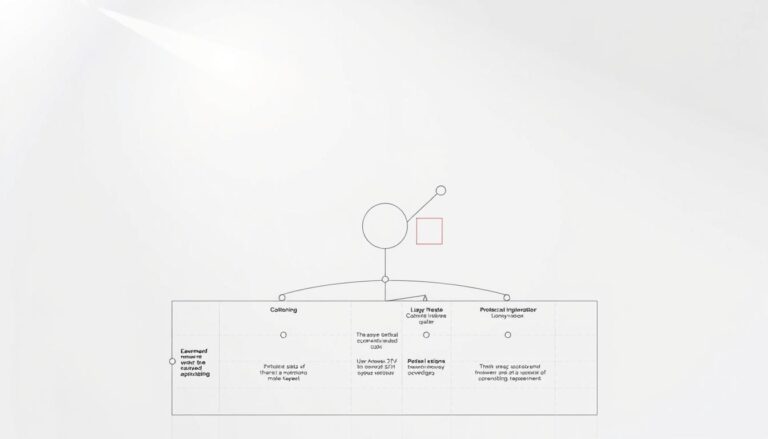Behind every successful webpage lies a hidden layer of HTML elements that shape its search engine performance. These code snippets, known as meta tags, act as digital signposts for search crawlers while influencing how content appears in results. Though invisible to visitors, their impact on click-through rates and organic visibility makes them indispensable for modern marketing strategies.
Originally designed as basic keyword containers, these elements now serve as precision tools for audience targeting. A well-crafted meta strategy helps businesses cut through online noise, particularly when launching products or services. As search algorithms evolve, their ability to interpret intent and context elevates meta tags from technical necessities to strategic assets.
For professionals seeking actionable insights, this guide builds on foundational concepts from our detailed SEO meta tags guide. We explore how advanced implementations drive measurable improvements in search rankings and user engagement. Discover why neglecting these elements risks leaving untapped visibility in competitive markets.
Key Takeaways
- Meta tags function as critical communication tools between websites and search engines
- Modern implementations combine technical precision with marketing psychology
- Proper use directly impacts click-through rates and organic search visibility
- Algorithm updates demand adaptive strategies rather than diminishing their importance
- Strategic tagging creates measurable advantages in product launch scenarios
Introduction to Meta Tags in Digital Marketing
Hidden within a webpage’s code, specific elements guide search engines and shape user interactions. These HTML descriptors, while invisible to visitors, form the backbone of technical SEO strategies. Their proper implementation bridges the gap between website content and algorithmic understanding.
What Are These Elements and Why Do They Matter?
Found in a page’s <head> section, meta tags act as digital translators for crawlers. They summarize page content through brief text snippets, helping algorithms assess relevance without analyzing entire documents. This streamlined communication directly affects how platforms index and display webpages.
Modern marketers treat these elements as strategic tools rather than technical afterthoughts. When optimized correctly, they improve content alignment with search intent and audience needs. Their hidden nature makes them powerful differentiators in crowded digital spaces.
Influencing Digital Discovery Channels
Search engines rely on meta tags to determine two critical factors: contextual accuracy and user value. Precise implementations can elevate rankings by clarifying page purpose to crawlers. They also shape how results appear in SERPs, indirectly affecting click-through rates.
Consider these elements as first impressions for algorithmic evaluation. A well-structured title tag tells crawlers what matters most, while accurate descriptions set user expectations. Together, they create a feedback loop where technical optimization meets human curiosity.
The Fundamentals of SEO and Meta Tag Functionality
Every webpage’s technical backbone contains carefully structured instructions that guide both algorithms and users. These HTML elements act as translators, converting raw content into signals search engines understand. Their strategic implementation bridges technical requirements with marketing objectives.
Breaking Down Meta Tag Architecture
A basic meta tag follows this pattern: <meta name="description" content="Page summary here">. Three components define its purpose:
- Declaration: The meta element identifies the tag type
- Attribute: Name specifies the tag’s category (description, keywords)
- Content: The actual message for search crawlers
Advanced implementations use property attributes for social media optimization. Open Graph tags like og:title control how content appears when shared. Each variation serves distinct technical and marketing needs.
Algorithmic Relationships With Metadata
Search engines evaluate meta tags during crawling to assess page relevance. While not direct ranking factors, they influence:
- Content categorization accuracy
- Click-through rates from SERPs
- User intent alignment
Proper syntax ensures crawlers interpret tags correctly. A misplaced quotation mark or missing attribute can nullify their effectiveness. This technical precision separates casual implementations from professionally optimized solutions.
Technical Best Practices for Meta Tag Implementation
Precision in technical execution separates functional meta tags from those that drive measurable results. Developers must balance platform-specific constraints with search engine requirements to maximize visibility. This demands familiarity with HTML standards and content management system (CMS) capabilities.
Proper Formatting and Placement in HTML
Effective implementations start with clean code structure. Always place meta tags within the <head> section using precise syntax:
- Declare charset first:
<meta charset="UTF-8"> - Follow with viewport tags for mobile optimization
- Include descriptive elements like title and description
| CMS Platform | Auto-Generated Tags | Customization Limits |
|---|---|---|
| WordPress | Charset, viewport | Full control via plugins |
| Shopify | Basic SEO tags | Theme-dependent edits |
| Wix | Image previews | Restricted access |
Common Pitfalls to Avoid During Optimization
Three critical errors plague even experienced developers:
- Duplicate descriptions across product pages
- Exceeding 160-character limits for mobile displays
- Mixing social media tags with core SEO elements
Platforms like Squarespace require workarounds for advanced implementations. For detailed strategies, explore our guide to optimize meta tags across CMS environments.
Optimizing Your go to market meta tags for SEO Success
Strategic keyword integration transforms generic HTML elements into powerful conversion tools. The right terms bridge the gap between technical SEO and human behavior, guiding both algorithms and users toward valuable content.

Conducting Keyword Research and Selection
Professional SEO teams use tools like Google Keyword Planner and SEMrush to analyze search volume and competition. These platforms reveal hidden opportunities by comparing user intent with existing content gaps.
| Tool | Best For | Key Metric |
|---|---|---|
| Google Keyword Planner | Budget-friendly insights | Search intent patterns |
| SEMrush | Competitor analysis | Difficulty scores |
| Moz Keyword Explorer | Long-tail opportunities | Priority ratings |
Long-tail phrases like “affordable winter hiking boots” often outperform broad terms. They attract specific audiences ready to engage, reducing bounce rates while improving relevance signals.
Avoiding Over-Optimization and Keyword Stuffing
Search algorithms penalize pages that repeat terms unnaturally. A balanced approach uses synonyms and related phrases to maintain readability. For example:
- Primary keyword: 1-2 uses
- Secondary terms: 3-4 variations
- Natural language: 90%+ readability score
“Meta tags should whisper to algorithms while shouting value to users.”
Tools like Hemingway Editor help identify awkward phrasing. They ensure content meets technical requirements without sacrificing human appeal – a critical balance for modern SEO success.
Leveraging Meta Tags for Enhanced User Experience
Beyond search engine communication, these HTML elements shape how visitors interact with content. Strategic implementations create frictionless journeys that boost engagement and satisfaction metrics.
Improving Mobile Responsiveness and Page Load Times
The <meta name="viewport"> tag acts as a mobile adaptation blueprint. It instructs browsers to:
- Adjust content width to device screens
- Maintain readable text scaling
- Prevent horizontal scrolling
Combined with charset declarations, these tags ensure consistent rendering across platforms. Faster-loading pages retain 53% more mobile users according to Shopify’s performance study.
Utilizing Social Meta Tags for Effective Sharing
Open Graph protocols transform shared links into branded content previews. Essential elements include:
- og:title: 60-character headlines for social feeds
- og:image: Visual hooks that increase click-through rates by 78%
- og:description: Concise summaries sparking user curiosity
Proper implementation ensures content appears as intended when shared across networks. This consistency builds trust while encouraging social engagement.
Integrating Meta Tag Strategies with Search Engine Guidelines
Search platforms maintain distinct rulebooks for evaluating HTML elements. Aligning meta tag practices with these evolving standards ensures content meets both technical requirements and user expectations.

Google’s Current Stance on Meta Tags and SEO
Since 2009, Google has ignored keyword meta tags but prioritizes title tags and descriptions. These elements shape search engine results previews and influence click-through rates. The company emphasizes content quality and user intent alignment over keyword density.
Google’s algorithms now parse meta tags for context clues rather than direct ranking signals. For example, structured data markup helps interpret product pages, while mobile-friendly tags affect mobile-first indexing. Regular updates to Search Central guidelines reflect these shifting priorities.
Role of Meta Tags on Bing and Other Search Engines
Bing’s approach contrasts sharply with Google’s methodology. Microsoft’s engine still factors keyword meta tags into its ranking calculations, alongside title and description elements. This creates opportunities for dual optimization strategies.
| Search Engine | Meta Keywords | Primary Focus |
|---|---|---|
| Ignored | Content relevance | |
| Bing | Active | Keyword alignment |
| Yahoo | Inactive | Title tags |
| AOL | Inactive | Social signals |
Smaller platforms like DuckDuckGo blend multiple engines’ approaches. Professionals should prioritize Google’s guidelines while implementing Bing-compatible elements where practical. This balanced tactic maximizes visibility across search engines without creating conflicting signals.
Advanced Techniques: Schema Markup and Social Optimization
Structured data transforms how search engines interpret and display web content. While traditional HTML elements communicate basic information, advanced implementations create interactive search results that stand out. These techniques help websites answer unspoken questions algorithms ask during content evaluation.
Implementing Schema Markup to Boost Contextual SEO
Schema markup acts as a translator for complex content relationships. This code layer clarifies:
- Product specifications for e-commerce pages
- Event dates and locations for promotions
- Review ratings for testimonials
Search engines reward this clarity with rich snippets – enhanced results displaying prices, star ratings, or availability. A study by Search Engine Journal shows pages with schema markup receive 30% more clicks than standard listings.
| Schema Type | Use Case | Visibility Boost |
|---|---|---|
| Product | E-commerce product pages | Price comparisons |
| Event | Concert tickets | Date reminders |
| Review | Customer testimonials | Star ratings |
Optimizing Open Graph and Twitter Card Tags
Social platforms require specialized instructions to display content effectively. Open Graph tags define how links appear when shared, while Twitter Cards enable platform-specific enhancements.
“Social meta tags turn casual shares into branded experiences that demand attention.”
Essential elements for maximum impact:
- og:image: 1200x630px visuals for link previews
- twitter:card: Summary or gallery formats
- og:description: 55-character teasers
Brands using both protocols see 40% higher engagement on shared content according to Hootsuite’s 2023 social trends report. This dual approach ensures consistent messaging across all discovery channels.
Conclusion
Effective SEO strategies hinge on balancing algorithmic clarity with human curiosity. While individual HTML elements may fluctuate in importance, their collective optimization remains vital for search engine rankings and user experience. Proper implementation acts as a bridge—translating content value to crawlers while setting accurate expectations for visitors.
Modern practices require adapting traditional methods to evolving standards. Though specific elements like keyword tags have diminished as a direct ranking factor, their strategic use still helps search engines understand context. This approach aligns technical precision with content relevance, creating sustainable visibility.
Continuous refinement separates successful campaigns from stagnant efforts. Regular audits identify outdated practices, while tools like structured data enhance engine results interpretation. For actionable methods to improve website visibility, professionals combine foundational SEO principles with platform-specific innovations.
Ultimately, these hidden elements shape how content gets discovered and perceived. Their ongoing optimization ensures websites meet algorithmic requirements while helping search engines deliver value to users—a dual focus driving long-term performance in competitive digital spaces.
FAQ
How do meta tags directly influence search engine rankings?
Meta tags help search engines understand page content and context. While not direct ranking factors, well-crafted title tags and meta descriptions improve click-through rates, which indirectly boosts visibility in results. Google emphasizes their role in user experience when evaluating content relevance.
What’s the optimal length for mobile-friendly meta descriptions?
Keep meta descriptions under 120 characters for mobile optimization. Shorter snippets prevent truncation on smaller screens while maintaining readability. Prioritize action-oriented language that aligns with mobile users’ search intent for better engagement.
Can overusing keywords in meta tags hurt website performance?
Yes. Keyword stuffing triggers search engine spam filters, potentially lowering rankings. Maintain natural language with 1-2 strategic keywords per tag. Tools like Moz’s On-Page Grader help analyze density while ensuring content remains user-focused.
How do social media meta tags differ from standard SEO tags?
Open Graph and Twitter Card tags control how content appears when shared socially. While they don’t impact search rankings directly, they increase click-through rates from platforms like Facebook and LinkedIn by enhancing visual presentation and message clarity.
Does Bing prioritize meta tags differently than Google?
Bing places slightly more emphasis on meta keywords than Google, though both prioritize title tags. Microsoft’s search engine also values proper HTML formatting and schema markup integration for technical SEO validation across pages.
Why combine schema markup with traditional meta tags?
Schema markup adds structured data that helps search engines interpret page context. When paired with optimized meta tags, it creates rich snippets in results – increasing visibility by up to 30% according to Search Engine Journal’s 2023 case studies.



